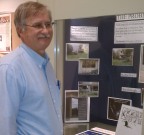 Last month I drove up to Allentown, Pennsylvania to have lunch and spend the afternoon with Dr. Dan Klem, Professor of Biology, and Sarkis Acopian Professor of Ornithology and Conservation Biology in the Department of Biology at Muhlenberg College. Dr. Klem has spent decades studying the problem of birds colliding with glass windows, and is the leading expert on this grave threat to birds. You can read his published research on his website. To give us the latest information on birds and windows, Dr. Klem graciously agreed to posting this exchange, where we discuss his latest research findings and experiences in addressing what is probably the #1 source of human-caused bird kills in North America.
Last month I drove up to Allentown, Pennsylvania to have lunch and spend the afternoon with Dr. Dan Klem, Professor of Biology, and Sarkis Acopian Professor of Ornithology and Conservation Biology in the Department of Biology at Muhlenberg College. Dr. Klem has spent decades studying the problem of birds colliding with glass windows, and is the leading expert on this grave threat to birds. You can read his published research on his website. To give us the latest information on birds and windows, Dr. Klem graciously agreed to posting this exchange, where we discuss his latest research findings and experiences in addressing what is probably the #1 source of human-caused bird kills in North America.
Urban Birdscapes: As early as 1990 you demonstrated that windows were a significant threat to birds on a continental level, killing perhaps up to a billion birds a year in the United States alone. What more have you discovered as you have continued to study this issue over the past 20 years?
Dr. Klem: Through documented observations and controlled experiments I have further confirmed and reaffirmed my interpretation that birds behave as if clear and reflective sheet glass and plastic are invisible to them. That bird-window collisions are possible wherever birds and windows coexist, and that this is true the world over, not just in North America where I spend most of my time studying this unintended and unwanted source of human-associated avian mortality.
I believe my work has further documented and provided convincing evidence that the best predictor of how many birds are killed striking windows at any one location is the density of birds in the immediate vicinity of the offending window. Migratory birds are attracted to urban light, water areas, and vegetation; all of these features in the built-environment landscape contribute to increasing the density of birds near windows. More space covered by glass equals more opportunities for birds to become victims when they are deceived attempting to reach habitat seen behind clear glass or reflected on the surface of mirrored panes.
Unflatteringly, I have also confirmed and reaffirmed that I have not been a very effective educator in enlisting the help of the conservationists, building industry professionals like glass manufacturers and architects, government officials charged with enforcing bird protection legislation, and members of the general public interested in the welfare of birds who are also in turn the most powerful of all constituencies capable of stimulating measures to protect birds from windows by creating a convincing market for short- and long-term solutions.
What do we still not know about windows killing birds? What additional window kill research needs to be done?
I believe we have an excellent understanding of the window-side of the issue. Clear and reflective sheet glass and plastic is invisible to birds, or more accurately since none of us are birds and really cannot know what they actually see and do not see, that birds act as if windows are invisible to them. This explains their vulnerability to windows and the frequently lethal consequences of collisions.
I would also suggest, as documented in the published results of my most recent studies addressing preventing bird-window collisions, that we have an elegant and what I believe most of us would agree is an aesthetically acceptable solution to protect birds from windows. That solution is the use of ultraviolet (UV) signals that can alert birds to the presence of the glass. Birds can see these UV markings, while humans cannot, permitting birds to successfully identify and avoid windows as barriers and at the same time permitting us humans to enjoy an unobstructed view through the windows we value and enjoy so much. This lets us protect birds from collisions while we still enjoy the out-of-doors from the comfort of the indoors.
What we still know precious little about is the bird side of the issue: the overall avian toll exacted by windows and the differential attrition and level of vulnerability of specific species. We still don’t know enough to be able to predict and attempt to responsibly manage this threat, as well as the geographic regions and habitat types where conventional human construction using conventional non-bird-safe windows most influences the health of local bird populations.
At the 1998 Ornithological Congress in St. Louis, you found two window-killed birds—a Yellow-bellied Sapsucker and a Red-winged Blackbird—at the conference site, and brought them to your paper presentation, where you asked your ornithological colleagues why your research on window collisions was failing to gain traction among professional researchers and bird conservationists. Do you find that the situation has improved at all in ornithological circles over the past decade? Is this issue getting the attention that it deserves?
To be sure there has been progress in educating professional ornithologists and conservationist about this source of avian mortality. However, in my view the topic receives no-where near the relative attention it deserves based on what we know about comparative avian mortality with windows and other human-associated bird mortality, most obviously that attributable to cats, oil spills, pesticides, vehicles, wind turbines and others.
A careful and objective assessment of the evidence associated with comparative avian mortality attributable to human structures and action reveals, at least to me that other than habitat destruction the attrition of birds by other human-associated sources is meager, exponentially lower, than the casualties at windows.
At a recent professional meeting I began to comprehend more clearly that the disproportionate attention to the less significant threats to birds has everything to do with what funding is available to address the threat and seemingly having little or no influence is the documented scale of the threat. Many power utilities have been willing to invest in bird studies to measure the threat of wind turbines and power lines, but with only one exception I am aware of glass and glass-coating (glazing) manufactures have been unwilling to invest in how to mitigate or eliminate bird kills at windows. From my interactions with these companies, it seems that they have been unwilling to invest in developing bird-safe glass products because they do not see a viable commercial market for these products. Sadly, history has taught us that we usually need governments to craft laws to help guide human protective measures–in this case the defenseless natural resource of birds. Just because a solution is ethically and morally correct does not offer enough of an incentive to stimulate a volunteer effort to bring it about.
How is the architectural community responding to the issue of window killed birds? What are some building projects you can point to that have done a good job of addressing this issue?
Here again, although I believe progress is being made to inform and enlist the help of architects and the use of their creative talents in saving more bird lives from windows, in general the progress is slow and I judge relatively insignificant given the frequency of attention architectural designs address bird protection from windows.
I enthusiastically support the green building initiatives that are expanding throughout the world, but even the best LEED (Leadership in Energy and Environmental Design) Certified buildings are not green to me if birds are being killed flying into windows designed to ensure internal natural lighting.
A few exceptional architects have prepared designs that protect birds from windows, including the late Margaret Helfand of Helfand Architecture (New York City) who used fritted glass with a dot pattern in the new science building on the campus of Swarthmore College in Philadelphia. Pennsylvania. The Studio Gang Architects of Chicago used creative netting to protect birds from windows in their award-winning design of the Ford Calumet Environmental Center outside of Chicago, Illinois. The Convenience Group is a company in Toronto, Ontario that creates and installed external window film, and they used one of their designs to retrofit the windows of a government building in Markham, Ontario in the Greater Toronto Area in Canada.
What are the most effective steps a home or business owner can take to make windows safer for birds?
First and foremost doing something is going to save lives more than doing nothing, no matter how concerned you might be. There are many ways to transform a window into a barrier that birds will see and avoid, but none to date that do not in some way interfere with our ability to have an unobstructed view through the window. Currently, some “visual noise” to humans is necessary to alert birds to the presence and dangers of windows.
How much visual noise a homeowner or building manager is willing to tolerate will determine how much protection they can provide to the birds in the vicinity of their windows. The use of stickers or decals to alert birds to the invisible window barrier can be very effective in the right configuration. The decals can be of any shape and size, but to be most effective they need to uniformly cover the window in vertical columns separated by four inches, or in horizontal rows separated by two inches. These patterns are known to transform a window into an object that birds as small as sparrows will avoid, completely eliminating the collision threat to birds.
Unfortunately, windows with fewer decals offer less protection from lethal collisions. In one of my earliest experiments I found that even a window with one decal on it reduced the number of birds striking the window, though the difference was not statistically (mathematically) significant. In that experiment over a 54 day period, nine fatal strikes occurred at a window with one decal on it while 12 strikes were recorded at an unaltered control window.
If decals are not deemed an option, the same effect can be had by using other multiple objects hung in front of windows, such as cloth, tape, strings, feathers, or used CDs. One important point about the use of decals or other objects hung near windows is that they must be placed over the outside surface of the pane. Since even clear glass will dangerously reflect sky or habitat at times, patterns on the inside of the window will not be visible to birds outside and they will continue to collide with the mirrored reflections.
Applying external films to windows has also been effective, but it is costly and my experience indicates that only the most dedicated, and perhaps emotionally affected, commit to such window protection for birds.
What types of products would you like to see in the future to help make windows safer for birds?
Ideally, the long-terms solution to protecting birds from windows is to have a coating (glazing) applied to sheet glass such that it offers a pattern of UV-reflecting and UV-absorption areas that birds see and we do not; such panes need to be available for sale and use in all new residential and commercial construction worldwide. Until such time as this bird-safe glass is available, existing windows should be retrofitted with external films having the same UV signal pattern and the same visual deterrence for birds and unobstructed viewing for us.
Moving away from science towards science fiction, what would you hope the future would look like regarding birds and windows?
I do not have to invoke science fiction to have a vision of how I hope windows in human structures will look in the future. They would look the same as they do now; the difference would be that future windows will have the bird protecting coatings (glazing) that birds see and we do not. If the results of my repeated and validating experiments are correct, UV signals are effective in eliminating bird-window collisions because birds see them and avoid the space they cover while we look unimpeded through the same space.
This would seem to be a reasonable solution worth the investment to save our birds, but so far that knowledge has not been enough to incite meaningful action to do so. My biggest and most important future challenge is to convince the building industry that investment in new bird-safe windows and external films is an ethical and moral cause required by bird protection laws (at least of the United States), and that by creating informed consumers there exists a worldwide market to justify it. To fulfill this challenging vision I welcome help from anyone likewise passionate about protecting our birds from the unintended and unwanted invisible window hazards that we have created!

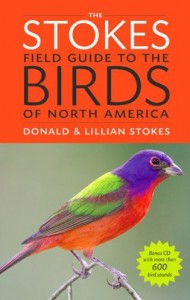

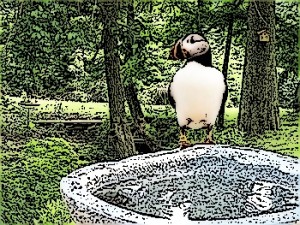
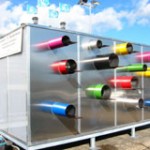
 Once upon a time (January 2004) I started Urban Birdscapes on Blogspot (
Once upon a time (January 2004) I started Urban Birdscapes on Blogspot (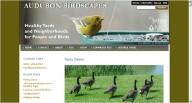 When Audubon hired me to lead urban bird conservation efforts across North America, I stopped blogging at Urban Birdscapes and proposed starting up an official blog for Audubon. It took three years of lobbying, but the powers that be at Audubon finally let me put up an Audubon Birdscapes blog in 2008.
When Audubon hired me to lead urban bird conservation efforts across North America, I stopped blogging at Urban Birdscapes and proposed starting up an official blog for Audubon. It took three years of lobbying, but the powers that be at Audubon finally let me put up an Audubon Birdscapes blog in 2008.